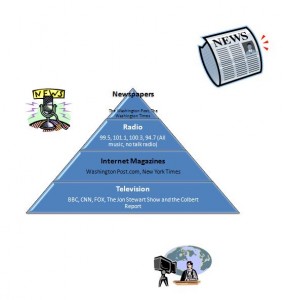Making audio journalism visible
Audio journalism is important and relevant for a variety of reasons, the primary one being that audio can lend itself better in situations where the subject may not want to be revealed on camera. It can help build a more textured and layered experience for audiences, and moreover, can add to the presence, emotions and atmosphere.
News organizations use audio in a variety of ways, including but not limited to:
- Reporter overview
- Podcasts
- Audio slide shows
- Breaking news
This chapter not only informs readers of how to get a good audio clip, but also points them in the direction of good recording technology and what it takes to stay current in today’s ever-expanding technological realm. Editing techniques are also discussed, giving readers the appropriate information to prepare, record and edit good quality sound bites to fit their needs.





